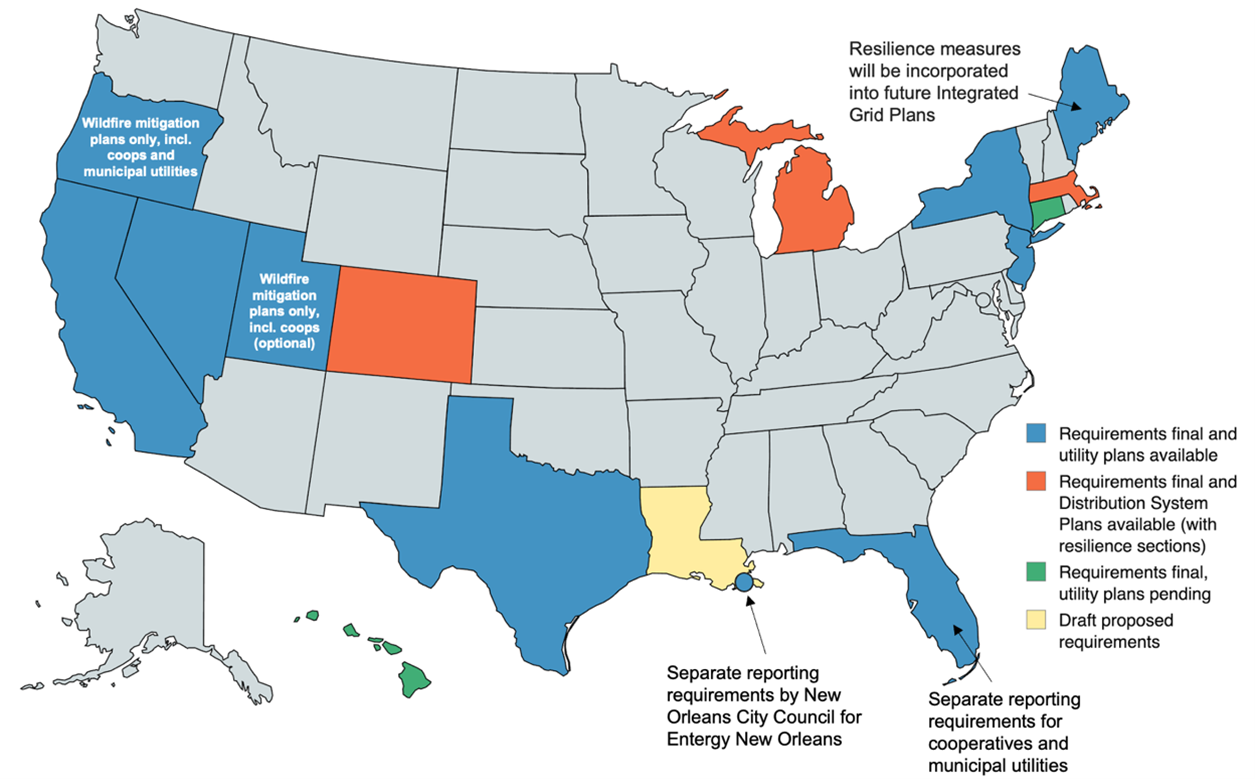Sign up for daily news updates from CleanTechnica on email. Or follow us on Google News!
Society is increasingly dependent on electricity for essential services. The Energy Information Administration (Short Term Energy Outlook) and many utilities are projecting surging electricity demand from data centers and new manufacturing facilities, leading to expected all-time highs in nationwide electricity consumption.
To effectively serve growing power needs, electricity grids must be resilient to natural and human-caused hazards — storms, floods, droughts, extreme temperatures, freezes, hurricanes, sea level rise, wildfires, seismic events, and cyber and physical attacks. In particular, increasing frequency and severity of extreme weather events pose unprecedented challenges to grid resilience, defined as the ability to prepare for, adapt to, withstand, and recover rapidly from disruptions to mitigate impacts (Presidential Policy Directive 21). More billion-dollar disasters occurred in 2023 than any other year on record. All 50 states have been impacted by at least one of these events in the past 10 years (NOAA).
Significant progress has been made to improve grid resilience in the past decade. Berkeley Lab’s new report, , is a resource for states and utilities to continue to advance resilience planning processes in the context of rapidly changing risks and technologies to address them.

As of June 2024, 14 states and one city require electric utilities to file resilience plans (Figure 1). While state requirements primarily focus on investor-owned utilities, in some states directives also apply to rural electric cooperatives, municipal utilities or both.
From May 2022 to June 2024, at least 30 utilities filed one or more resilience plans under requirements that Berkeley Lab identified. These plans apply to over 47 million utility customers, with the aim to improve grid resilience for roughly 130 million people, or 39% of the U.S. population.
Drawing on state requirements and utility filings, Berkeley Lab’s new report summarizes emerging best practices and offers a standard template that states and utilities can adapt to meet their own needs based on policy objectives, regional hazards, and utility infrastructure and processes in scope. Key elements of the template include a vulnerability assessment (see framework in Figure 2), description of proposed resilience programs, and projected costs and rate impacts. While the focus of the template is on extreme weather events, it also incorporates additional threats including cyber and physical attacks and seismic events. Utilities can use the template even in the absence of state resilience planning requirements.

Josh Schellenberg and Lisa Schwartz authored the report. The U.S. Department of Energy’s Office of Energy Efficiency and Renewable Energy supported this work.
Courtesy of Lawrence Berkeley National Laboratory, U.S. DOE Office of Science national laboratory managed by the University of California.
Contact: Lisa Schwartz, Berkeley Lab’s Energy Markets and Policy Department
Have a tip for CleanTechnica? Want to advertise? Want to suggest a guest for our CleanTech Talk podcast? Contact us here.
Latest CleanTechnica.TV Videos
CleanTechnica uses affiliate links. See our policy here.
CleanTechnica’s Comment Policy






